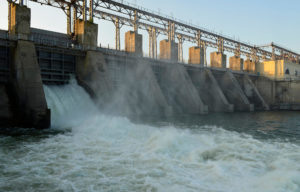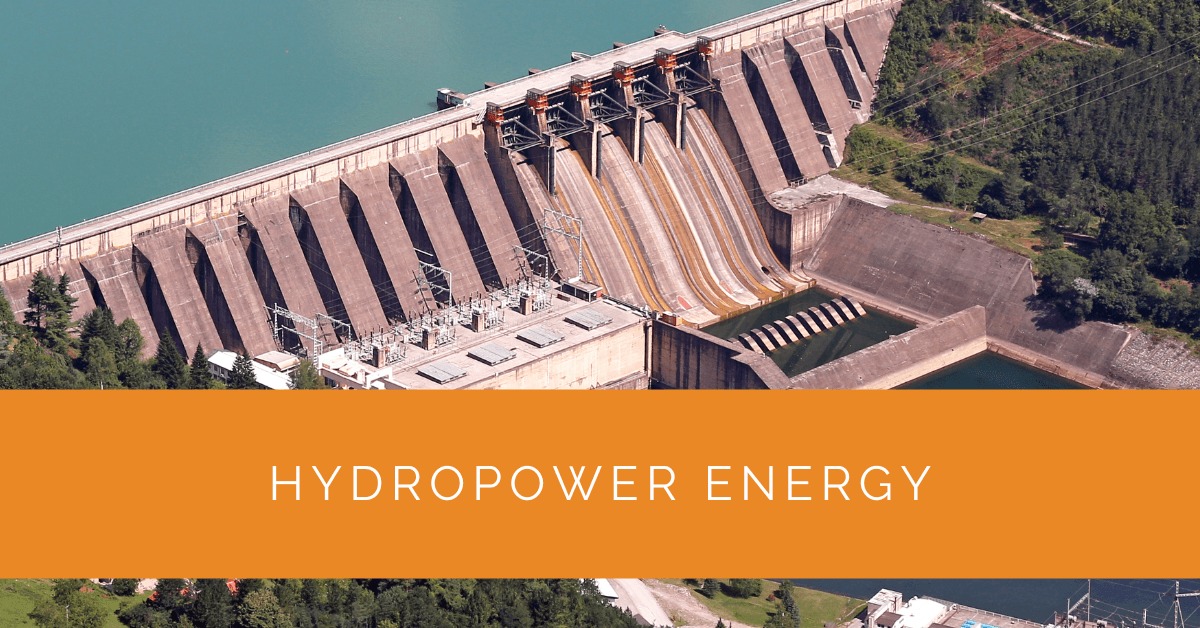Renewable energy has become a critical component in the fight against climate change and transitioning to a sustainable future. Hydropower stands out as a reliable and environmentally friendly option among the various renewable energy sources available. This article will delve into hydropower energy, exploring its workings, benefits, and potential as a renewable electricity generator.
Contents
- 1 Key Takeaways
- 2 Understanding Hydropower
- 3 How Hydropower Works
- 4 Environmental Impacts of Hydropower
- 5 Hydropower and Solar Energy
- 6 Case Study: Integrating Hydropower and Solar Energy for Enhanced Renewable Solutions
- 7 Expert Insights From Our Solar Panel Installers About Exploring Hydropower Energy
- 8 Conclusion
Key Takeaways
- Hydropower energy harnesses the power of moving water to generate clean and renewable electricity, offering a reliable and sustainable alternative to traditional power sources.
- Hydropower plants consist of essential components such as dams, turbines, and generators, working together to convert the kinetic energy of flowing water into electrical energy.
- Hydropower is crucial in reducing greenhouse gas emissions, preserving water resources, and supporting aquatic ecosystems, making it a valuable contributor to the transition toward a greener future.
Understanding Hydropower
What is Hydropower?
Hydropower, also known as hydroelectric power, generates electricity by harnessing the energy of moving water. By converting the kinetic energy of flowing or falling water into mechanical energy, which is then transformed into electrical energy, hydropower offers a clean and renewable alternative to traditional power sources.
The Role of Hydropower in Renewable Energy
In the quest for sustainable energy solutions, hydropower plays a crucial role. Unlike fossil fuel-based power plants, hydropower facilities produce electricity without emitting harmful greenhouse gases. This renewable nature makes hydropower a key contributor to reducing our carbon footprint and mitigating climate change.
When comparing hydropower to other energy sources, such as solar, nuclear, natural gas, and coal, it becomes evident that hydropower possesses several advantages. Unlike solar energy, which relies on sunlight, hydropower can generate electricity consistently, regardless of weather conditions. Additionally, unlike nuclear power plants, which carry the risk of accidents and the long-term management of radioactive waste, hydropower is a safe and proven technology.
How Hydropower Works
Components of a Hydropower Plant
A hydropower plant consists of several essential components that work together to generate electricity. The dam is at the heart of this system, which creates a reservoir by impounding water. The dam’s primary function is to control the flow of water, ensuring a steady and reliable supply for power generation.
When water is released from the reservoir, it flows through pipes and channels, reaching the turbine. The turbine converts the water’s kinetic energy into mechanical energy by spinning a shaft. As the turbine rotates, it drives the generator, which produces electrical energy through the principles of electromagnetic induction.
Types of Hydropower Systems
Hydropower systems can be classified into different types based on design and operating mechanisms. Two common categories are reservoir-based systems and run-of-river systems.
Reservoir-based systems involve the construction of large dams and reservoirs, allowing for greater control over water flow. These systems provide a reliable energy source, as the stored water can be released constantly. One advantage of reservoir-based systems is their ability to store water during periods of low demand and release it during peak demand, providing a more balanced electricity supply.
On the other hand, run-of-river systems operate without significant storage reservoirs. Instead, they rely on the natural flow of rivers or streams to generate electricity. Run-of-river systems are often more environmentally friendly, as they minimize disruptions to natural watercourses and ecosystems.

Environmental Impacts of Hydropower
Positive Environmental Aspects
Hydropower offers several positive environmental aspects. Firstly, it produces no direct emissions of greenhouse gases, contributing to cleaner air and reduced carbon dioxide emissions. Moreover, it helps reduce dependence on fossil fuels, major contributors to climate change.
Additionally, hydropower plants can serve as multipurpose structures, providing benefits beyond electricity generation. For example, they can offer nearby communities flood control, irrigation, and water supply. These additional functions enhance the value and sustainability of hydropower projects.
Potential Concerns and Mitigation Strategies
While hydropower presents numerous environmental advantages, it also poses certain challenges that must be addressed. One concern is the construction of dams and reservoirs, which can alter ecosystems and disrupt aquatic habitats. Fish migration can be impeded, affecting fish populations and biodiversity.
To mitigate these concerns, several strategies have been developed. Fish ladders and fish bypass systems are implemented to allow migratory fish to navigate past dams. Environmental monitoring programs ensure the ongoing assessment of the plant’s impact on surrounding ecosystems, guiding necessary adjustments to minimize adverse effects.
Hydropower and Solar Energy
Hydropower and solar energy are two complementary renewable energy sources. Both have unique advantages and limitations, but combined, they can create a more robust and resilient energy system.
Hydropower plants can serve as a form of energy storage for solar power. During excess solar energy generation periods, hydropower plants can divert electricity to pump water into elevated reservoirs, effectively storing the energy. Later, when solar generation decreases or demand increases, the stored water can be released, driving turbines to generate renewable electricity.
Case Study: Integrating Hydropower and Solar Energy for Enhanced Renewable Solutions
Background
At Solar Panels Network USA, we are committed to advancing renewable energy solutions that contribute to a sustainable future. This case study explores a project where we integrated hydropower and solar energy systems to create a resilient and efficient renewable energy solution for a rural community.
Project Overview
Our client, a rural community in the Pacific Northwest, sought a reliable and sustainable energy solution to reduce their dependence on fossil fuels and enhance energy security. Given the region’s abundant water resources and favorable solar conditions, we proposed an integrated system combining hydropower and solar energy.
Implementation
Initial Assessment and Feasibility Study
We conducted a comprehensive assessment to evaluate the potential for hydropower and solar energy generation. The study included analyzing river flow data, solar irradiance levels, and the community’s energy consumption patterns.
Designing the Integrated System
Based on the assessment, we designed a hybrid system that utilized both hydropower and solar energy. The system included a run-of-river hydropower plant and a solar photovoltaic (PV) array. The hydropower plant was designed to harness the kinetic energy of flowing water, while the solar array captured sunlight to generate electricity.
Energy Storage and Management
To enhance the system’s reliability, we integrated an energy storage solution using the hydropower plant’s capacity to pump water into elevated reservoirs during periods of excess solar generation. This stored water could then be released to generate electricity when solar output decreased, ensuring a stable and continuous energy supply.
Installation and Optimization
Our experienced installation team executed the project with precision. The hydropower plant was constructed with minimal environmental impact, incorporating fish ladders to allow for aquatic life migration. The solar PV array was installed with optimal orientation and tilt to maximize sunlight capture. Advanced monitoring systems were implemented to track energy production and manage the integrated system efficiently.
Results
Reliable and Sustainable Energy Supply
The integrated system provided the community with a reliable and sustainable energy supply. The combination of hydropower and solar energy ensured continuous electricity generation, even during periods of low sunlight or water flow variations.
Enhanced Energy Security
The community experienced enhanced energy security, reducing their reliance on external energy sources. The hybrid system’s ability to store and manage energy effectively contributed to a stable and resilient energy infrastructure.
Environmental and Economic Benefits
The project delivered significant environmental benefits by reducing greenhouse gas emissions and promoting renewable energy. Additionally, the integrated system provided economic advantages through energy cost savings and the creation of local jobs in the renewable energy sector.
Summary
This case study demonstrates the potential of integrating hydropower and solar energy to create a robust and efficient renewable energy solution. Solar Panels Network USA successfully designed and implemented a hybrid system that provided reliable and sustainable energy for the community. The project’s success highlights the value of combining different renewable energy sources to enhance energy security and promote sustainability.
Expert Insights From Our Solar Panel Installers About Exploring Hydropower Energy
Hydropower energy provides a consistent and reliable source of renewable electricity, which can complement solar power. Its ability to generate power regardless of weather conditions makes it a crucial part of our renewable energy mix.
Senior Solar Engineer
The integration of hydropower with solar energy can enhance energy storage and supply stability. During periods of high solar generation, hydropower plants can store energy and then release it when solar output decreases.
Lead Solar Installer
Hydropower projects, when designed with environmental considerations in mind, can offer significant benefits, including flood control and water supply, in addition to renewable energy generation.
Solar Energy Consultant
Conclusion
Hydropower is a vital player in the realm of renewable energy, offering a sustainable and reliable source of electricity. Its ability to generate power from flowing water and its environmental advantages position it as a key component in our transition towards a greener future.
By understanding the components and workings of hydropower plants, we can fully appreciate their benefits. From their role in reducing greenhouse gas emissions to their potential for integrated systems with other renewable energy sources, hydropower plants hold immense promise.
As we search for viable alternatives to traditional energy generation methods, hydropower is a shining example of renewable power. Let’s harness the power of moving water and embrace the potential of hydropower energy for a cleaner, more sustainable world.
About the Author
Solar Panels Network USA stands at the forefront of solar energy solutions, driven by a team of seasoned solar engineers and energy consultants. With over decades of experience in delivering high-quality solar installations and maintenance, we are committed to promoting sustainable energy through customer-centric, tailored solutions. Our articles reflect this commitment, crafted collaboratively by experts to provide accurate, up-to-date insights into solar technology, ensuring our readers are well-informed and empowered in their solar energy decisions.

